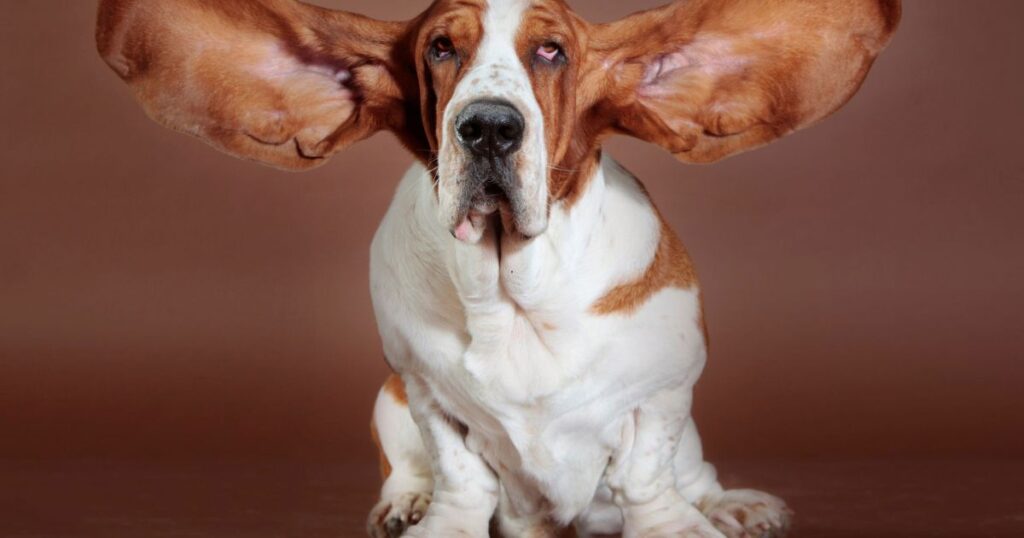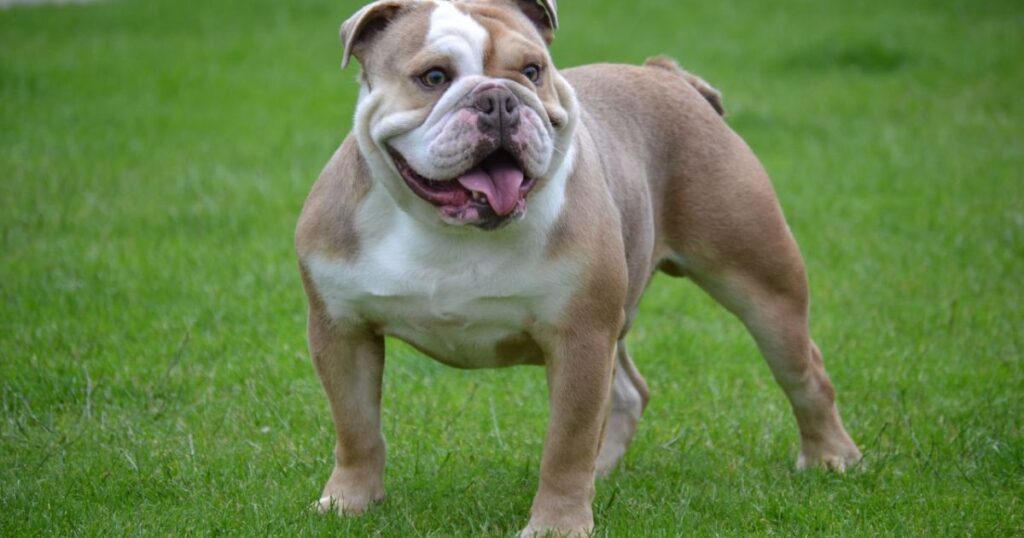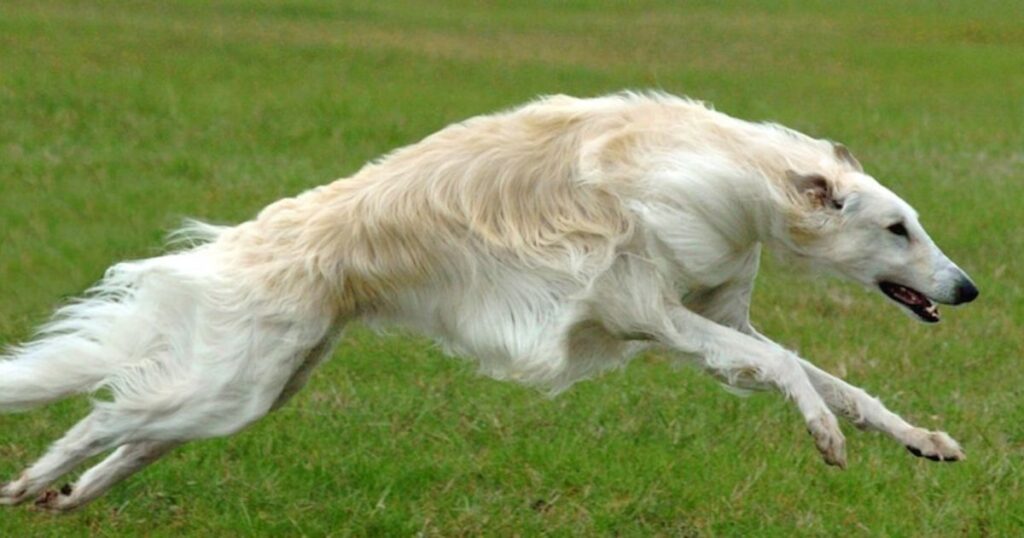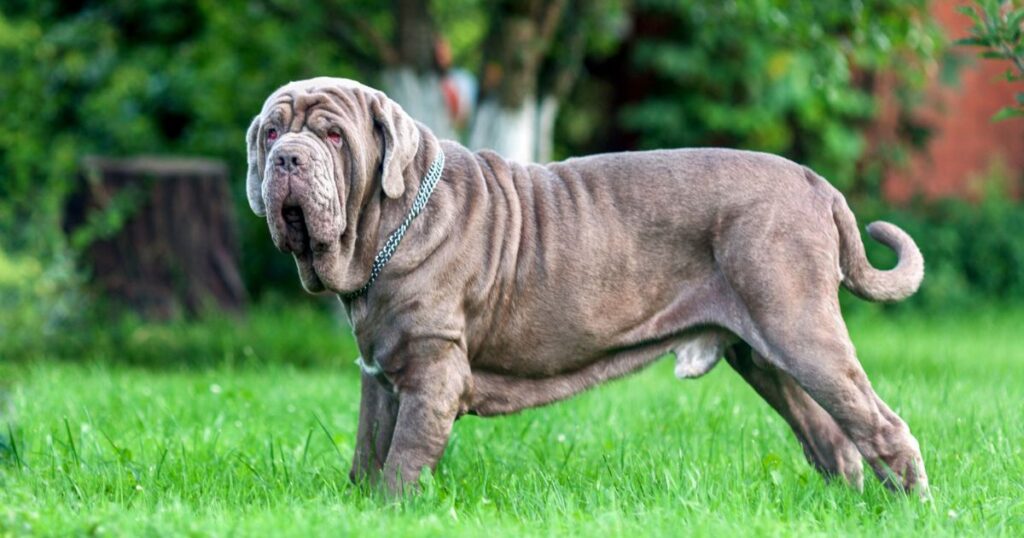Disclaimer: We believe every dog breed possesses unique intelligence and capabilities.
The Border Collie stands as the most intelligent dog breed globally, with the Poodle ranking second. This naturally raises questions about which breeds might be considered less intelligent in traditional assessments.
The term “dumb” represents a harsh characterization, as no breed truly lacks intelligence. Rather, certain breeds demonstrate different types of cognitive abilities that may not align with conventional training expectations.
What Makes a Dog Dumb or Smart?
Determining canine intelligence requires specific evaluation criteria. Recent research from the University of Helsinki published comprehensive findings in Scientific Reports during 2022, titled “Breed Differences in Social Cognition, Inhibitory Control, and Spatial Problem-Solving Ability in the Domestic Dog.”
Between 2016 and 2022, researchers evaluated 2,352 adult dogs using the smartDOG test battery, examining multiple behavioral and cognitive traits.
The assessment methodology included testing:
- Greeting behavior patterns
- Activity level measurements
- Exploratory behavior tendencies
- Learning capacity
- Short-term memory function
- Inhibitory control abilities
- Problem-solving skills
- Social cognition development
- Logical reasoning capabilities
- Human-directed communication
- Persistence levels
Results demonstrated that breeds typically exhibited characteristics aligned with their original breeding purposes, though exceptions existed. The Kelpie and Malinois scored exceptionally well in gesture recognition tests, matching expectations for herding breeds. However, the Finnish Lapphund, despite being a herding breed, received the lowest scores.
The research revealed significant variation even within breed groups. The Australian Shepherd showed the least likelihood of abandoning difficult tasks, while the Kelpie frequently abandoned challenges. This suggests that individual breeds can vary dramatically in behavioral traits, even within their designated categories.
Since only thirteen breeds participated in this study, comprehensive breed rankings remain incomplete. The research did not account for training effects, environmental influences, life experiences, or individual backgrounds that significantly impact intelligence measurements. In problem-solving tasks, the Belgian Shepherd Malinois performed best, while Golden Retrievers scored lowest, with over twenty percent unable to complete tasks within three minutes.
Dr. Stanley Coren’s 1994 publication “The Intelligence of Dogs” established foundational intelligence categories for over one hundred dog breeds, focusing on three specific intelligence types:
Instinctive intelligence encompasses the natural ability to perform breed-specific tasks such as herding or hunting. Adaptive intelligence measures independent problem-solving capabilities and learning from previous experiences. Working and obedience intelligence evaluates learning capacity when receiving human instruction.
The 10 Smartest Dog Breeds

Traditional intelligence rankings identify these breeds as exceptionally trainable and responsive:
The Border Collie leads all breeds in working intelligence, followed by the Poodle and German Shepherd Dog. The Golden Retriever, Doberman Pinscher, and Shetland Sheepdog complete the top tier. Additional highly intelligent breeds include the Labrador Retriever, Papillon, Rottweiler, and Australian Cattle Dog.
The 10 Least Intelligent Dog Breeds
According to traditional obedience-based assessments, these breeds score lower in conventional intelligence measures:
The Afghan Hound tops the list, followed by the Basenji, Bulldog, Chow Chow, and Borzoi. The Bloodhound, Pekingese, Beagle, Mastiff, and Basset Hound complete this category.
This classification does not indicate these breeds lack intelligence but rather suggests different cognitive priorities.
Dogs Are Bred for Different Skills
Dr. Nicholas Dodman, professor emeritus at Tufts University’s Cummings School of Veterinary Medicine, explains that canine intelligence depends entirely on assessment methods. Individual dogs may appear less intelligent in certain contexts while excelling in their specialized areas.
Consider a comparison between two dogs with different energy levels and focus. One might seem less engaged in training sessions but transforms completely when performing breed-specific tasks. A coonhound demonstrates remarkable intelligence when tracking scents, utilizing sophisticated olfactory capabilities that represent genuine brilliance in their specialized field.
Purebred dogs possess dramatically different skill sets based on their breeding purposes. Herding breeds like Border Collies, Australian Shepherds, and Kelpies earn universal recognition for exceptional intelligence because their work demands both independent decision-making and human instruction compliance.
Border Collies demonstrate superior trainability when herding livestock, making complex decisions while responding to handler commands. This combination of independence and obedience creates the impression of superior overall intelligence.
Why are Hound Dogs Often Considered to Be Dumb?

Dr. Dodman explains that scenthounds operate primarily through olfactory guidance. These breeds prove challenging to train because they focus downward rather than maintaining eye contact with handlers. Their motivation centers on scent tracking rather than pleasing humans or performing tricks.
Sighthounds prioritize chasing moving objects, following powerful instinctual drives. Each breed serves specific purposes, while mixed breeds combine various purebred characteristics.
Superficial judgments often label slow-moving, inattentive dogs as less intelligent, but this assessment ignores their specialized capabilities. Independent thinking may actually represent superior intelligence compared to simple obedience.
Scenthounds like Basset Hounds, Beagles, and Bloodhounds can detect virtually any scent. Sighthounds spot subtle prey movements and pursue targets with remarkable speed. While Border Collies excel in trainability, Bloodhounds surpass them dramatically in scent detection. Each breed demonstrates excellence within their specialized domains.
Research on Dog Intelligence is Not Perfect
Current research on breed intelligence contains significant limitations, according to Dr. Brian Hare of Duke University, North Carolina.
Breed-based intelligence studies lack scientific rigor because most breeds developed within the past 150 years, providing insufficient time for meaningful differentiation. Scientifically proving breed intelligence would require comparing at least thirty dogs from each breed, using puppies raised and tested under identical conditions to control for environmental factors.
Comprehensive breed testing would demand 6,000 to 12,000 puppies, decades of research, millions of dollars, and approximately one thousand graduate students. These requirements explain why no organization has undertaken such extensive research.
Dr. Hare’s research reveals equal variation within breeds as between different breeds. Military-bred Labradors and assistance dog Labradors represent the same breed but demonstrate completely different behavioral characteristics and capabilities.
Human categorization of “dumb” breeds reflects misunderstanding rather than accurate intelligence measurement. These assessments fail to recognize breed-specific skill sets and capabilities.
Gina DiNardo, assistant executive secretary for the American Kennel Club, emphasizes that ease of training does not accurately measure intelligence. Human perceptions of animal stupidity often reflect independence, stubbornness, or aloofness, which represent common breed characteristics rather than intelligence deficits.
Effective training requires time, patience, and individualized approaches. Different techniques work better for different breeds and individual dogs. Professional trainers can provide valuable skills for challenging training situations.
Dr. Hare rejects the concept of “smart” and “dumb” dogs entirely, viewing this classification as an outdated linear intelligence model. Different dogs excel in different areas, and all breeds demonstrate genius within their specialized capabilities.
The 10 Dumbest Dog Breeds & Their Traits
1. Afghan Hound
Temperament: Loyal, loving, playful, joyful, aloof
Suitable for: Families with time for play seeking loving companions
Lifespan: 12-14 years
The Afghan Hound leads traditional “least intelligent” rankings, though Afghan enthusiasts strongly disagree. These sighthounds were bred for exceptional speed and eyesight in hunting applications.
Afghans demonstrate natural aloofness, appearing standoffish and reserved, particularly with strangers. They exhibit stubborn and independent characteristics that complicate training efforts, but this does not indicate lack of intelligence. Afghans prefer independent thinking and operating on their own terms.
Training Afghans requires creative approaches, but their elegance, regal bearing, and human devotion create exceptional companionship experiences.
2. Basenji
Temperament: Sweet, high-energy, fastidious
Suitable for: Active families, canine competitors, experienced owners
Lifespan: 13-14 years
The Basenji represents another sighthound characterized by independence and aloofness. Many describe this breed as possessing feline qualities, including self-grooming behaviors similar to cats.
Basenjis earn reputations for training difficulty, though training ease does not accurately indicate intelligence levels. These dogs demonstrate high intelligence, curiosity, and moderate playfulness. Like inquisitive children, Basenjis possess sufficient intelligence to create trouble without proper supervision.
Basenji ownership resembles managing wild animals in many respects. They remain watchful and wary, bonding with owners while potentially rejecting unfamiliar people.
Basenjis respond well to positive training methods despite their stubborn nature. They can learn effectively but maintain independent decision-making preferences.
3. Bulldog

Temperament: Affectionate, courageous, loyal, loving, friendly
Suitable for: Experienced owners, single people, households with older children
Lifespan: 8-10 years
Bulldogs demonstrate notable stubbornness while maintaining American Kennel Club recognition for trainability. Traditional intelligence rankings place Bulldogs lower due to training challenges, but evidence contradicts “dumb” classifications.
Famous skateboarding and surfing Bulldogs clearly demonstrate learning capabilities and physical coordination. These activities require significant intelligence and training dedication.
Bulldogs often receive “lazy” labels, though many individuals enjoy vigorous activities beyond lounging. Individual variation within the breed challenges stereotypical assessments.
4. Chow Chow
Temperament: Reserved, dignified, loyal, adaptable, smart, independent
Suitable for: Experienced families with older children or singles
Lifespan: 8-12 years
Chow Chows resemble adorable teddy bears but rarely exhibit cuddly personalities. Originally bred as guard dogs, hunters, or pulling dogs, Chows maintain serious, independent, and aloof characteristics.
Strong-willed and stubborn nature creates training difficulties, placing them on traditional “least intelligent” lists. Chows possess genuine intelligence but maintain independent mindsets that complicate obedience training.
Proper Chow development requires firm but positive training combined with extensive early socialization. Well-raised Chows become noble, loyal, and devoted companions.
5. Borzoi

Temperament: Calm and agreeable but can be stubborn and protective
Suitable for: People seeking beautiful dogs with rich pedigrees willing to invest training effort
Lifespan: 9-14 years
The Borzoi represents another sighthound characterized by independent thinking. Borzoi training requires exceptional patience due to their stubborn nature and independent decision-making preferences.
Frequent, short training sessions prove more effective than extended classes for Borzois. They excel in chasing and fetching games that utilize their sighthound abilities, though public outings require leash control for safety.
6. Bloodhound
Temperament: Affectionate, even-tempered, patient, gentle, stubborn, independent
Suitable for: Active families, search and rescue workers, houses with fenced yards
Lifespan: 10-12 years
Bloodhounds experience the world through extraordinary scent capabilities, similar to witnessing aurora borealis displays that transform ordinary environments into spectacular sensory experiences.
Training difficulties arise from constant scent distractions that interrupt focus and attention. Bloodhounds possess tremendous energy, stubbornness, independence, and absolute relentlessness when following scent trails.
These characteristics create challenging living situations, but Bloodhounds demonstrate exceptional talents in tracking events where their specialized skills receive proper recognition and utilization.
7. Pekingese
Temperament: Affectionate, alert, watchful, loyal
Suitable for: Companion-oriented people with available time, families with older children, singles, elderly individuals
Lifespan: 12-15 years
Pekingese may appear slow due to their somewhat sloth-like behavior. At home, they prefer lounging and surveying their territory, potentially due to physical build or historical background as sacred pets of Chinese nobility.
Historical “sleeve dogs” were carried by Imperial household members within voluminous sleeves, establishing preferences for comfortable lifestyles. Pekingese independence creates training challenges that require early, consistent approaches.
Despite training difficulties, Pekingese demonstrate devoted loyalty to their loved ones and make excellent companions for appropriate households.
8. Beagle
Temperament: Cheerful and affectionate, curious, energetic, and vocal
Suitable for: Active families, hunters, experienced dog owners
Lifespan: 10-15 years
Beagles follow their noses, which sometimes creates problematic situations. Their sweet, affectionate nature combined with happy-go-lucky outlooks might suggest empty-headedness, though appearances deceive.
Beagles prove more trainable than other breeds on this list, with slight stubbornness often overcome through food motivation. They cannot resist exploration urges, scent investigation, and small animal chasing.
“Merry” descriptions accurately characterize Beagles, who remain popular pets due to their engaging personalities and manageable training requirements.
9. Mastiff

Temperament: Calm, protective, gentle, fearless
Suitable for: Families, those with adequate space, those wanting even-tempered guard dogs
Lifespan: 6-10 years
Large, laid-back Mastiffs maintain extremely relaxed personalities that might suggest limited intelligence. Stubbornness and training challenges contribute to lower traditional intelligence rankings.
Activity level and training ease do not indicate intelligence accurately. Mastiffs possess genuine brightness but experience training boredom, requiring short, positive sessions for optimal results.
Early training and socialization become essential due to their size and natural stranger wariness, ensuring Mastiffs develop into well-behaved, discerning companions.
10. Basset Hound
Temperament: Loyal, laid back, stubborn
Suitable for: Active owners experienced with stubborn breeds, hunters, outdoorsy types
Lifespan: 12-13 years
Basset Hounds can appear lazy, potentially due to their long, low body structure or laid-back personalities. Bassets demonstrate stubbornness, and like scenthound relatives, they struggle to ignore fascinating scents during training sessions.
Lifelong training becomes necessary for obedient Basset Hounds, though this requirement should not suggest intelligence deficits. They possess brightness and affectionate natures that make them excellent companions for patient owners.
The Bottom Line on the Dumbest Dog Breeds
No breed deserves “dumb” classifications, whether applied to entire breeds or individual dogs. While intelligence variations exist between dogs, most excel in specific areas that require proper identification and development.
Different dogs demonstrate different capabilities and behaviors. Police and military services typically utilize German Shepherd Dogs and Malinois types due to their exceptional trainability. However, this preference raises questions about whether easy trainability indicates superior intelligence or simply represents willingness to follow directions rather than independent thinking.
Both perspectives have merit in different contexts. The key lies in understanding and appreciating each breed’s unique capabilities rather than applying universal intelligence standards that may not reflect genuine cognitive abilities.
Why Read Breed Profiles?
Dog breed profiles benefit everyone, regardless of whether you own mixed breed or purebred dogs, by improving understanding and enhancing your dog’s quality of life. Mixed breed owners should research all constituent breed profiles to better understand their dog’s characteristics and needs.
DNA testing services provide easy identification solutions for owners uncertain about their dog’s breed composition, enabling more informed care and training approaches.

Hello, I’m Daisy Sadie, a writer at Azaadpuns. I explore the dynamic world of puns and wordplay, delivering captivating linguistic twists that will make you laugh and groan. Join me on Azaadpuns.com for the latest in clever wordplay that makes language fun again.

